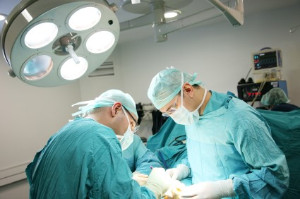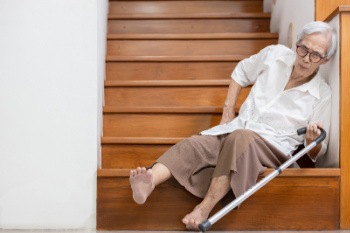
Plantar fibroma excision is a minor outpatient procedure lasting 30 to 40 minutes, performed to remove a benign fibrous nodule from the plantar fascia of the foot. This condition often appears as a firm lump in the arch that may cause pain with weight bearing, discomfort while wearing shoes, or the sensation of a mass beneath the foot. While excision offers relief, there are risks such as recurrence of the fibroma or numbness due to nerve involvement. A podiatrist evaluates the need for surgery based on symptoms and failed conservative treatments, guiding patients through diagnosis, imaging, and aftercare. If you are struggling with persistent foot arch discomfort or difficulty walking due to a plantar fibroma, it is suggested that you consult a podiatrist for expert evaluation and treatment options.
Foot surgery is sometimes necessary to treat a foot ailment. To learn more, contact Brian Doerr, DPM of Florida. Our doctor will assist you with all of your foot and ankle needs.
When Is Surgery Necessary?
Foot and ankle surgery is generally reserved for cases in which less invasive, conservative procedures have failed to alleviate the problem. Some of the cases in which surgery may be necessary include:
- Removing foot deformities like bunions and bone spurs
- Severe arthritis that has caused bone issues
- Cosmetic reconstruction
What Types of Surgery Are There?
The type of surgery you receive will depend on the nature of the problem you have. Some of the possible surgeries include:
- Bunionectomy for painful bunions
- Surgical fusion for realignment of bones
- Neuropathy decompression surgery to treat nerve damage
Benefits of Surgery
Although surgery is usually a last resort, it can provide more complete pain relief compared to non-surgical methods and may allow you to finally resume full activity.
Surgical techniques have also become increasingly sophisticated. Techniques like endoscopic surgery allow for smaller incisions and faster recovery times.
If you have any questions please feel free to contact our office located in Fort Meyers, FL . We offer the newest diagnostic and treatment technologies for all your foot and ankle needs.

Stretching and strengthening exercises can help reduce pain from plantar fasciitis, which involves irritation of the thick band of tissue running along the bottom of the foot from the heel to the toes. Tight calf muscles, including the gastrocnemius and soleus, may increase strain on the heel. Stretching these muscles by leaning into a wall with either a straight or slightly bent knee can help relieve tension. Strengthening the foot is also important. The short foot exercise, which involves lifting the arch without curling the toes, can build support in the foot. Heel raises, done by lifting the heels while standing and then lowering slowly, can improve calf strength. Other helpful exercises include picking up small objects with the toes to train the muscles that support the arch. A podiatrist may suggest these and other targeted movements as part of a broader treatment plan. If you have heel pain that may be related to plantar fasciitis, it is suggested that you schedule an appointment with a podiatrist for appropriate treatment options.
Plantar fasciitis is a common foot condition that is often caused by a strain injury. If you are experiencing heel pain or symptoms of plantar fasciitis, contact Brian Doerr, DPM from Florida. Our doctor can provide the care you need to keep you pain-free and on your feet.
What Is Plantar Fasciitis?
Plantar fasciitis is one of the most common causes of heel pain. The plantar fascia is a ligament that connects your heel to the front of your foot. When this ligament becomes inflamed, plantar fasciitis is the result. If you have plantar fasciitis you will have a stabbing pain that usually occurs with your first steps in the morning. As the day progresses and you walk around more, this pain will start to disappear, but it will return after long periods of standing or sitting.
What Causes Plantar Fasciitis?
- Excessive running
- Having high arches in your feet
- Other foot issues such as flat feet
- Pregnancy (due to the sudden weight gain)
- Being on your feet very often
There are some risk factors that may make you more likely to develop plantar fasciitis compared to others. The condition most commonly affects adults between the ages of 40 and 60. It also tends to affect people who are obese because the extra pounds result in extra stress being placed on the plantar fascia.
Prevention
- Take good care of your feet – Wear shoes that have good arch support and heel cushioning.
- Maintain a healthy weight
- If you are a runner, alternate running with other sports that won’t cause heel pain
There are a variety of treatment options available for plantar fasciitis along with the pain that accompanies it. Additionally, physical therapy is a very important component in the treatment process. It is important that you meet with your podiatrist to determine which treatment option is best for you.
If you have any questions, please feel free to contact our office located in Fort Meyers, FL . We offer the newest diagnostic and treatment technologies for all your foot care needs.

Falls at home are often caused by slippery surfaces, poor lighting, clutter, and uneven flooring. As people age, changes in balance, muscle strength, vision, and reaction time increase the risk of falling. Certain medications may also cause dizziness or unsteadiness, further raising the likelihood of an accident. Preventing falls involves practical home modifications, such as installing handrails on stairs, placing grab bars in bathrooms, improving lighting in hallways, and regularly reviewing medications with a healthcare provider. A podiatrist can play an important role by treating foot conditions that contribute to instability, such as arthritis, neuropathy, or improper footwear. They may also provide balance assessments, orthotics, and mobility support to help reduce the risk of future falls and improve overall safety at home. If you have foot or ankle pain and are at risk of falling, it is suggested that you consult a podiatrist who can treat various foot conditions, and guide you on additional fall prevention tips.
Preventing falls among the elderly is very important. If you are older and have fallen or fear that you are prone to falling, consult with Brian Doerr, DPM from Florida. Our doctor will assess your condition and provide you with quality advice and care.
Every 11 seconds, an elderly American is being treated in an emergency room for a fall related injury. Falls are the leading cause of head and hip injuries for those 65 and older. Due to decreases in strength, balance, senses, and lack of awareness, elderly persons are very susceptible to falling. Thankfully, there are a number of things older persons can do to prevent falls.
How to Prevent Falls
Some effective methods that older persons can do to prevent falls include:
- Enrolling in strength and balance exercise program to increase balance and strength
- Periodically having your sight and hearing checked
- Discuss any medications you have with a doctor to see if it increases the risk of falling
- Clearing the house of falling hazards and installing devices like grab bars and railings
- Utilizing a walker or cane
- Wearing shoes that provide good support and cushioning
- Talking to family members about falling and increasing awareness
Falling can be a traumatic and embarrassing experience for elderly persons; this can make them less willing to leave the house, and less willing to talk to someone about their fears of falling. Doing such things, however, will increase the likelihood of tripping or losing one’s balance. Knowing the causes of falling and how to prevent them is the best way to mitigate the risk of serious injury.
If you have any questions, please feel free to contact our office located in Fort Meyers, FL . We offer the newest diagnostic and treatment technologies for all your foot care needs.

